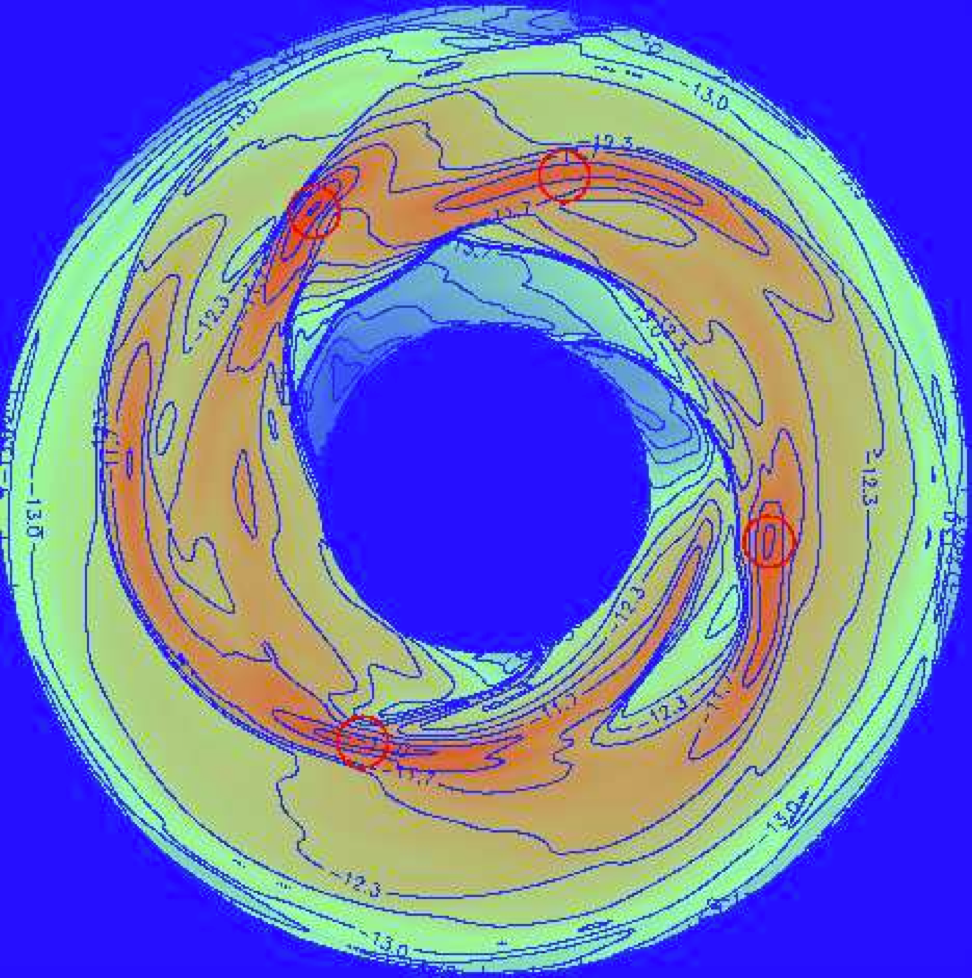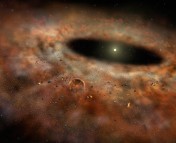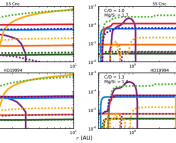- Paper Title: Can Planets Form in Clustered Environments? (arxiv: 1209.2136)
- Authors: Maria de Juan Ovelar et al.
- First Author’s Affiliation: Leiden Observatory, Leiden University, Leiden, The Netherlands
- Journal: Astronomy and Astrophysics (Accepted)
Overview: This paper notes that the environment in which star-planet systems can be an important factor in determining their habitability. In particular, it argues that systems that form in very dense regions will have trouble remaining habitable.
Core Argument
A protoplanetary disk (PPD) is the progenitor for a planetary system; specifically, it is the swirling cloud of gas and dust circling a star from which planets form. Most studies of planet formation consider the process proceeding in isolation, as most stellar systems are unbound from each other. However, what if a PPD were to exist in a dense stellar neighborhood (an environment with lots of other stars packed close in, like a globular cluster)? Then it could be possible that gravitational interactions with neighboring stars might disrupt the PPD. These interactions might strip away the dust, gas and planetisimals (“little planets”, asteroid-sized aggregates) beyond a certain radius in the disk, meaning that planets would only be able to form closer to the star; too close, and they could be too warm to harbor liquid water – and life as we know it.
This paper tests this idea. The authors begin by drawing on a number of publically available catalogs of data of PPDs, then applying a number of cuts to make sure that they work with an unbiased, clear sample. For example, disks imaged at large distances are biased to having larger radii because large radii make disks more readily resolved. To compensate, the authors exclude any disk from the sample that had a radius greater than the minimum radius that could be resolved from the most distant source in the sample (a radius of ~50 AU). After applying these tests, the original sample is reduced from 133 PPDs to 67. To test the possible effects of stellar density on this sample of disks, they compare the radius of the PPD disk to the surface density of stars in the stellar neighborhood.
Results
Studying these data, the authors find that the PPD radii are independent of local stellar density…right up until about a surface density of ~10^3.5 stars/pc^2. At this point, the distribution starts being truncated toward higher radii (there are fewer PPDs at large radii). This corresponds to what is expected from a relatively simple model-based calculation carried out in the paper, which predicts that dynamical considerations should start limiting disk size around ~10^3 stars/pc^2. The authors employ a statistical test known as the Kolmogorov-Smirnov test to show that the set of low-surface-density planets is 97% likely to be drawn from a different distribution than (distinct from) high-surface-density (~10^3.5 stars/pc^2) planets, suggesting that the cutoff at high surface densities is real.
Assuming gravitation interactions are what’s limiting the radii of PPDs in star-dense environments, thes authors then move to estimate the lifetime of disk habitable zones by checking how long they expect the disk to survive before being stripped by a stellar encounter in high-density environments. Based on the fact that the Earth exists, the authors argue that the Earth “cannot have formed in a dense…environment unless the density decreased on a short [100 Myr] timescale”. Evidence from meteorites and supernova tells us that the Earth did form in a dense stellar environment. Putting these two thoughts together, the authors argue that the Earth must have been formed in a dense stellar neighborhood that dispersed on a short ~10 Myr timescale.
More generally, habitable zone lifetimes decrease with increasing stellar surface density and stellar mass. This means that the most planets in the “habitable zone” should be formed around 1) sparse regions, with few other nearby stars, and 2) low mass stars. The paper closes with a call for more observations of PPD’s in dense clusters to further test this theory.
Overall, this paper represents a perspective on a new constraint on habitability: stability due to dynamic interaction with neighboring stars!




